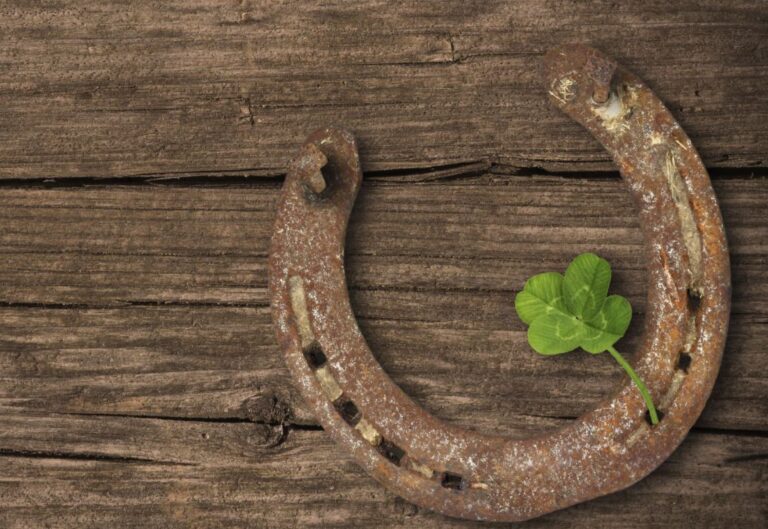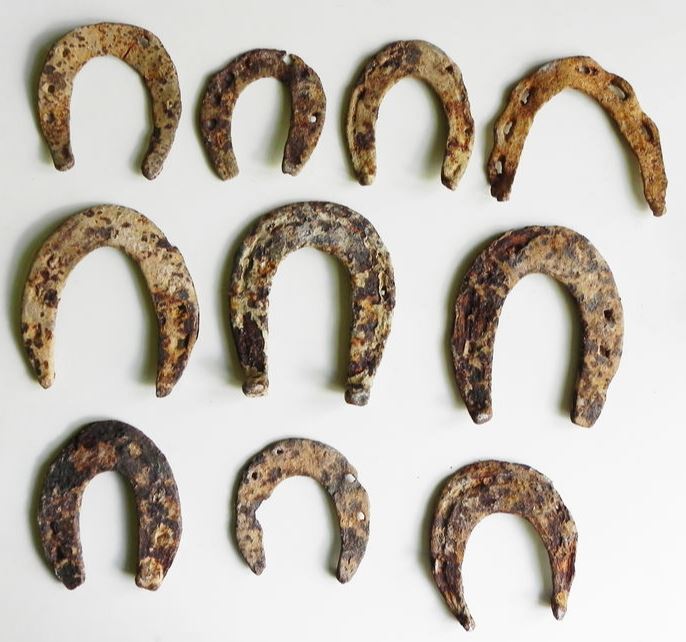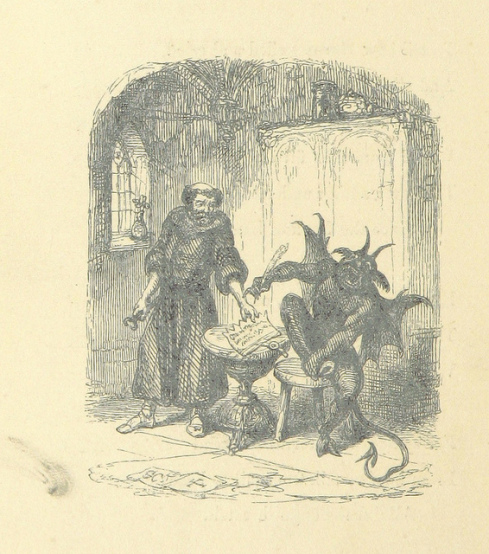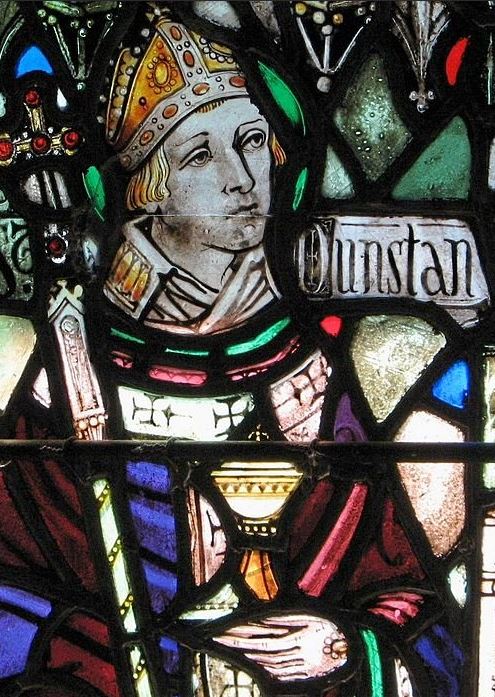
Humankind has always looked for signs and symbols. Even today we have our “lucky shirt” or the rituals that simply give us peace of mind. Some of these lucky symbols are very ancient and their origin is lost in the mists of time. One of these ancient lucky symbols is the lucky and protective powers of the horseshoe. Why is the horseshoe supposed to bring good luck? In reality, only a minority of the population owns or has even ridden a horse, yet we continue to sell amulets, charms, pendants in the shape of a horseshoe.

Birth of the Horseshoe
The horseshoe itself was born out of necessity. The ancient Greeks introduced it to the world when they realized that horses’ hooves were easily damaged while heavyweights or traveling on hard roads. Yet, the protection that the horseshoe gives to the horses’ hooves has nothing to do with today’s meaning.
The Moon Shaped Horseshoe
Soon after its invention, our ancestors realized that the horseshoe had a U shape resembling a half-moon. Very early civilizations believed that heavenly manifestations like stars, the Sun, and the Moon brought luck and fertility to the land and the family. Thus, immediately the horseshoe became a representation of heavy powers and a protective amulet.
The Devil and the Horseshoe on Doors


It was, however, in the 10th Century that the horseshoe achieved the status of religious protection. St. Dunstan was a quiet smith and musician in England living a normal life until the devil visited him. Legend tells the story of the devil disturbing Dunstan while he was playing his instruments. Annoyed Dunstan sought revenge and seeing the devil limping offered to give him a nice shoe. Immediately, the devil agreed but Dunstan nailed a red-hot horseshoe to the devil’s hoof. The devil screamed in pain and begged Dunstan to remove the horseshoe. Before doing so, Dunstan made the devil promise that he would forever respect the symbol of the horseshoe. The devil agreed and the tradition of hanging a horseshoe at the door of every home was born.
The Celtic Horseshoe and the Mischievous Goblins

The St. Dunstan legend is very similar to an older Celtic Tradition. In this tradition, fairies. elves and goblins were the creatures of the forest up to no good. To protect their families and children, the Celts started hanging horseshoes at their door to scare the malevolent creatures. Goblins in particular were very afraid of Celtic metal weapons. Metal itself was considered a charm and it was believed that iron could drive away malignant creatures. The combination of metal, resemblance to weapons, and the shape similarity of the horseshoe with the Celtic moon god’s crescent protected the Celts from the forest creatures’ mischiefs.
The Direction of the Horseshoe

The direction of the horseshoe is also considered fundamental in determining their powers. A horseshoe pointing down is thought of fending off negative attacks to the owner of the horseshoe. In a way, it fends off any negative influence on the life of the bearer of the symbol. Conversely, when the horseshoe is pointed upwards, its mystical powers are in theory focused on bringing wealth and good luck.